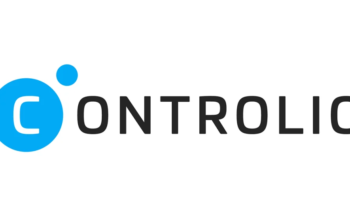Headless commerce is an emerging trend in the e-commerce world. It’s a new way of doing business. Retailers can customize their customer experience by connecting their front-end websites or apps with back-end systems like inventory management, payment processing, and order fulfillment.
With headless commerce, retail stores have more control over how customers interact with their products and services, which can result in increased sales and customer loyalty. In this article, we’ll explore what precisely headless commerce is, its advantages and disadvantages, and tips for successfully implementing it into your own business.
What is headless commerce?
At its core, headless commerce is a type of architecture that decouples the front-end user interface from the back-end systems, allowing retailers to directly control how customers interact with their store. Instead of using the original e-commerce platforms, which provide front-end and back-end services, headless commerce allows retailers to use different tools for each component. This means they can tailor their customer experience more precisely by only using the components necessary for their business model.
Advantages of headless commerce
Headless commerce offers several advantages to retailers over traditional eCommerce solutions:
- It gives retailers more control over how customers interact with their stores, allowing them to customize and optimize every aspect of the shopping experience based on their needs.
- It is much easier to make changes and updates to the front end of the website or app, as it does not require additional coding.
- Headless commerce offers improved scalability for retailers looking to expand their business.
Disadvantages of headless commerce
Despite its advantages, there are some drawbacks to using headless commerce:
- It can be more expensive than traditional eCommerce solutions due to the cost of configuring different components and services from multiple vendors.
- Since everything is connected via APIs, there is an increased risk of security vulnerabilities if they are not correctly configured.
- It requires a lot of technical knowledge to set up a successful implementation.
Tips for implementing headless commerce
If you are considering implementing headless commerce into your own business, there are several steps you can take to ensure a successful implementation:
- Ensure you have the necessary technical skills and resources in-house to implement the solution.
- Research your options for vendors and services that will fit your needs.
- Test different components configurations before launching them live to avoid unexpected issues.
- Find an experienced consultant or agency to help you set up and manage the system.
The architecture of headless commerce
In a traditional e-commerce setup, the front-end (what the customer sees and interacts with) is tightly coupled to the back-end (where all the data is stored and managed). However, the two are decoupled in a headless commerce setup, allowing for much more flexibility and scalability.
The back-end can be powered by any number of e-commerce platforms, while the front-end can be built using any number of modern web technologies. This separation also allows for seamless integration with third-party services and applications.
As a result, headless commerce provides a powerful and flexible solution for e-commerce businesses of all sizes.
How does headless commerce impact customers?
In recent years, headless commerce has become an increasingly popular option for businesses looking to improve their online presence. This approach offers several advantages, including greater flexibility and scalability.
However, it is essential to consider how headless commerce will impact customers before implementing this solution. One potential issue is that customers may have a more difficult time navigating a headless website. With a unified front-end, finding the information or products that customers want can be easier.
Additionally, customer support may also be more challenging in a headless environment. With access to the back-end systems, customer service representatives may be able to troubleshoot issues or provide accurate information. As with any significant change, it is essential to consider how headless commerce will impact customers before implementing this solution.
What is the difference between headless and traditional commerce?
Headless commerce refers to decoupling the front-end storefront from the back-end systems that power it. This allows businesses to build their store using any technology they choose without being limited by the capabilities of their e-commerce platform.
On the other hand, traditional commerce connects front-end and back-end together, meaning businesses are limited to using the tools and features provided by their platform. While headless commerce offers greater flexibility, it can also be more complex to set up and manage.
As a result, it’s essential to carefully consider your needs before deciding which type of commerce is right for you.
All in all
Headless commerce is an emerging trend in the e-commerce world; offering businesses increased control and scalability to improve their customer experience. While it has its advantages, there are some drawbacks before implementing it into your business. By taking the necessary steps and having a clear plan for success, retailers can take full advantage of this robust architecture and reap the rewards of increased sales and customer loyalty.
With headless commerce becoming more popular daily, now is the perfect time to start exploring how it could benefit your retail business. With a bit of research and planning, you can also begin reaping the benefits headless commerce offers.
Related Posts
Hi there! I’m Sethu, your go-to guy for all things tech, travel, internet, movies, and business tips. I love sharing insights and stories that make life more interesting. Let’s explore the world together, one article at a time!











